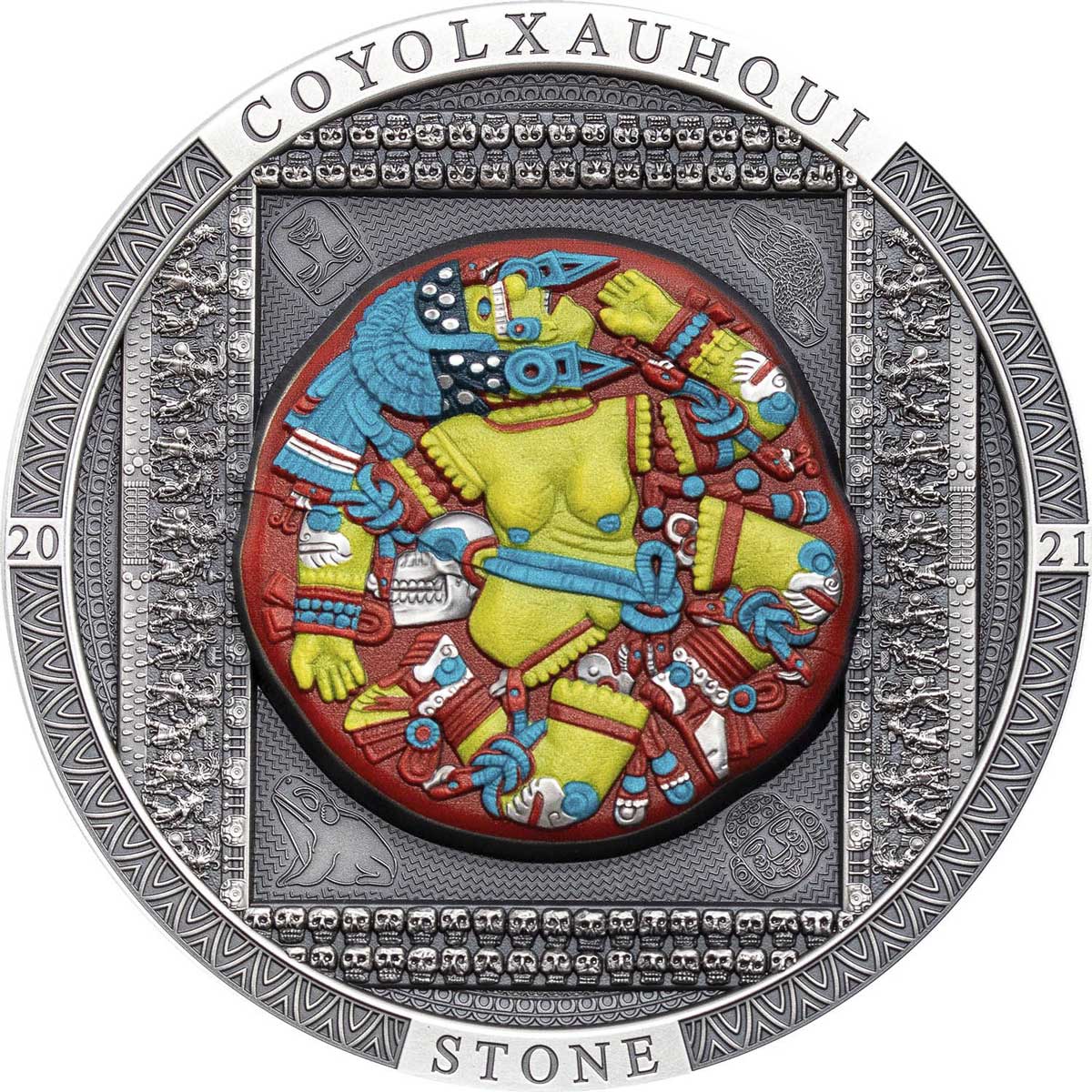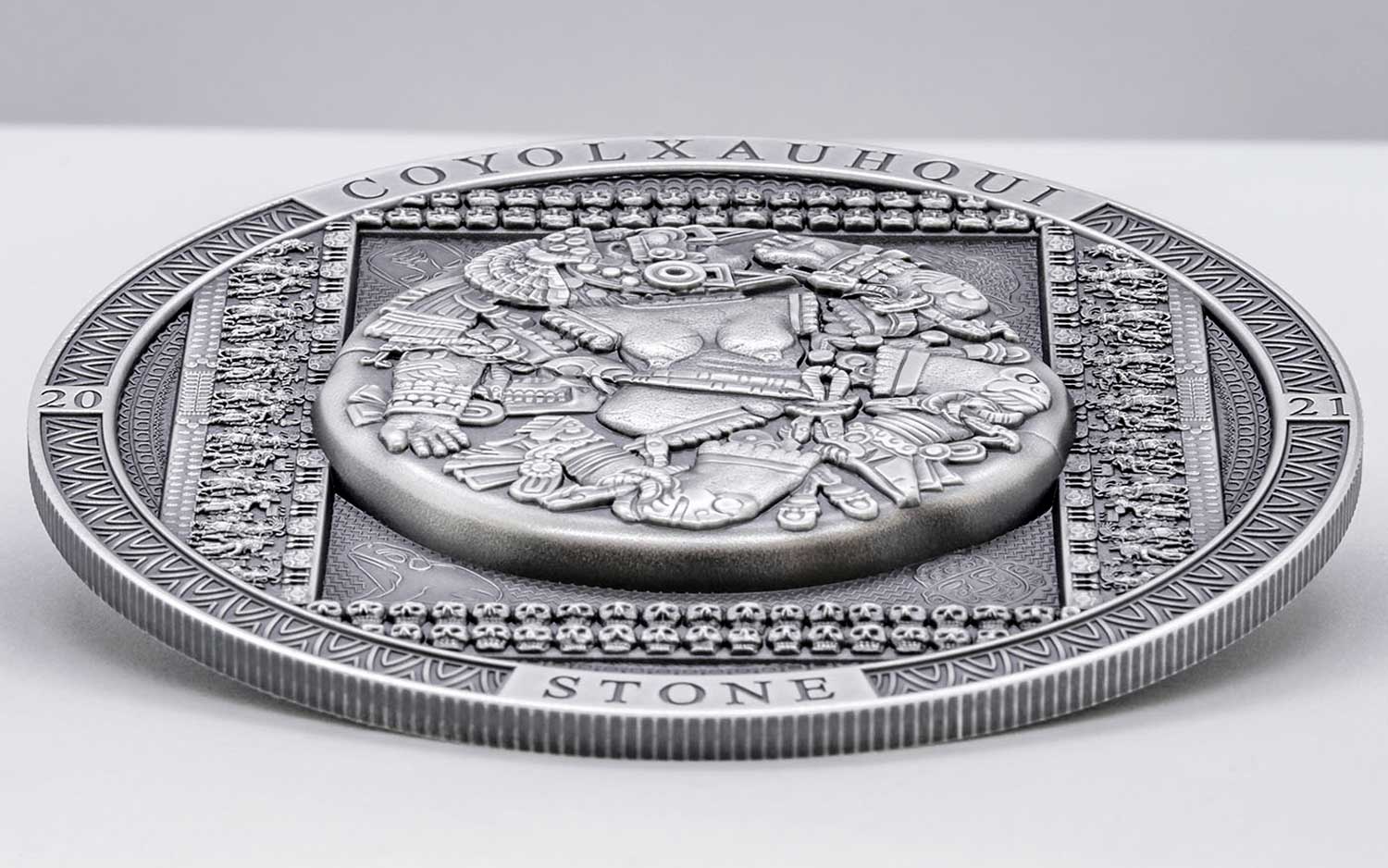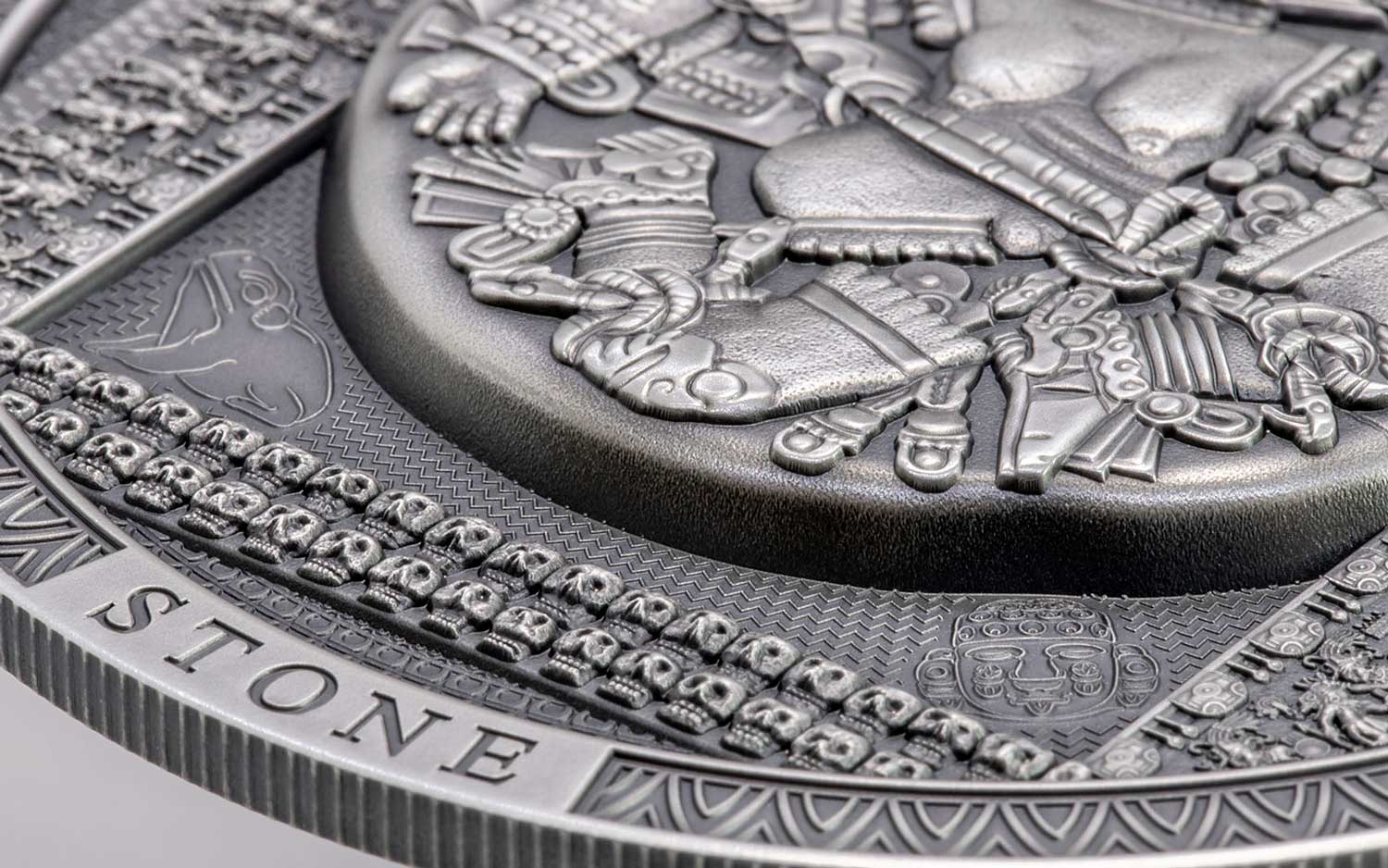Numiscollect’s ‘Archaeology & Symbolism’ series continues with the Aztec artifact telling the story of Coyolxāuhqui
There’s been a renewed interest in numismatic circles for the striking art and archaeology of the old Aztec civilisation of Mesoamerica. The Aztec Empire wasn’t actually that long-lived in the grand scheme of things, existing from circa 1345 to 1521, when it encounted European colonialism head-on, with predictable results.
However, there is much archaeological and documentary evidence of the civilisation, and new artifacts are found regularly. The old Aztec capital is under Mexico City, and in 1978, a 3.25 metre wide stone disc was uncovered, which depicted the tale of Coyolxāuhqui. That makes it a great fit for Numiscolllect’s Archaeology & Symbolism series, which has already showcased the Aztec Calendar Stone – an even larger stone artifact.
This quite outstanding series of three-ounce silver coins is an object lesson in how to transform archaeological objects into numismatic form. The object is reproduced in the centre, replete with high-relief detail and enhanced with smartminting, and the whole thing is lifted by a background packed with finely detailed Aztec imagery. You can see in the images lower down just how exquisite they are, from frescos to skulls.
For the first time, there are three variants on offer. The base version is antiqued as always, and there’s also the gilded variant (99 mintage), both of which have been in the series since its inception. However, in a very cool touch, 99 of the 333 antique coins are selectively coloured in the centre section. It’s particularly neat because the colour is based on an actual reproduction created from scientific analysis of pigment fragments still present in the artifact. Like the old Roman and Greek marbles, and the Egyptian temples, it’s a potent reminder that what we see today isn’t what they looked like when first created.
This series is unusual in being issued for two different countries. Asian themed coins seem to be released for Mongolia, with the rest for the Cook Islands. Coyolxauhqui is obviously the latter, and the composition includes the distinctive question mark, Zen garden background patterm, and the effigy of Queen Elizabeth II.
Again, these are large diameter coins, reaching out to a healthy 65 mm across and come boxed with a Certificate of Authenticity. We’re going to describe this coin like we’ve described every release in this series to date – first class. It’s a terrific choice of subject, beautifully realised, and we actually love the coloured version for what it represents. You should be able to pre-order this one shortly, although it won’t ship for a few months yet. Whatever variant you choose, we can’t imagine any disappointment on arrival. Feel free to check out our Coin Series Profile of this impressive range.
GREAT COYHOLXAUHQUI STONE
The myth of Coyolxauhqui’s demise at the hands of Huitzilopochtli was commemorated in a large stone disk, known as the Great Coyolxauhqui Stone, which was excavated at the base of the Templo Mayor, Tenochtitlan. It depicts in high relief the dismembered and decapitated corpse of Coyolxauhqui and dates to c. 1473 CE during the reign of Axayacatl. The goddess wears only a warrior’s belt with skull, a headdress with eagle down feathers, and a bell on her cheek.
The Templo Mayor pyramid was actually a twin shrine to the rain god Tlaloc and the war god Huitzilopochtli. A double staircase climbed the temple, and the disk was placed, significantly, at the base of the steps leading to Huitzilpochtli’s shrine. It was atop this temple that humans were sacrificed and their bodies dismembered and tossed down the steps to land at the base, just as in the myth on Snake Mountain.
Besides reminding of the importance of Huitzilopochtli, the stone was also a stark warning to the enemies of the Aztecs who saw themselves as the victorious warrior Huitzilopochtli. Defeated warriors led up the steps of the Temple Mayor for the ultimate sacrifice would have been reminded that they were soon to be the equivalent of the defeated Coyolxauhqui.
The 3.4 m (10.5 ft) diameter stone was re-discovered in 1978 CE when workers were excavating the basement of a bookstore in downtown Mexico City. In condensing a three-dimensional scene onto a two-dimensional plain, it is one of the great masterpieces of Aztec art and now resides in the Museo del Templo Mayor in the city in which it was discovered.
Cartwright, Mark. “Coyolxauhqui.” World History Encyclopedia. World History Encyclopedia, 11 Feb 2016. Web. 15 Apr 2021.
| ARCHAEOLOGY & SYMBOLISM |
||
| DENOMINATION | $20 Cook Islands | $20 Cook Islands |
| COMPOSITION | 0.999 silver | 0.999 silver |
| WEIGHT | 93.3 grams | 93.3 grams |
| DIMENSIONS | 65.0 mm | 65.0 mm |
| FINISH | Antique silk (some coloured) | Gilded |
| MODIFICATIONS | Smartminting | Smartminting |
| MINTAGE | 333 (of which 99 coloured) | 99 |
| BOX / C.O.A. | Yes / Yes | Yes / Yes |











Probably the best of the whole series. Loving the small fine details especially the bas reliefs. The color one is superb!